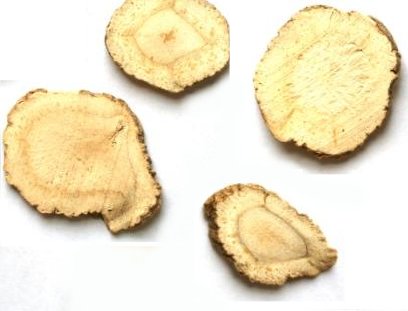Bai Zhi

  | Bai Zhi in TCM:Explore the properties of Bai Zhi according to Chinese
Nutrition and Traditional Chinese Medicine (TCM):
Factoids:
English Name: angelica, dahurican angelica root
Pharmaceutical Name: Radix Angelicae Dahuricae
Properties: acrid, warm
Temperature: warm
Channels: LU, ST
Flavors: pungent
Special Properties:
disperses cold, clears heat, clears damp, disperses wind, reduces swelling
Actions / Indications:
- Expels wind; opens the nasal passages; alleviates pain
(blocked nasal passages; pain along yangming channel on the face (supraorbital
pain, toothache); external wind-cold with headache; any problem due
to wind invading yangming channel of head, wind-cold or wind-heat when
combined with other herbs)
- Reduce swelling; expels pus (purulent infection of
superficial area; furuncles, carbuncles: combine with clear heat herbs)
- Dries Damp; Alleviates discharge (leukorrhea,
usually due to damp-cold in the lower jiao: or can treat damp-heat leukorrhea
with appropriate combination)
Other Notes:
- Bai Zhi is a headache analgesic guiding to Yangming channels, but
overdose can cause high blood pressure, slowed heart rate, increased
depth of respiration, vomiting, and in severe cases can cause seizures
and convulsions.
Contraindications:
- (cc: blood or yin deficiency)
- (cc: caution if pus drains smoothly from sores)
Disclaimer: In accordance with our terms of service, by using this web site you agree that none of the information found on this web site constitutes medical advice. You should always consult your doctor before trying any particular food or herbal remedy to treat disease.
Folk remedies presented on this site are designed to address specifc TCM diagnoses, and are not one-size-fits-all. If you would like to learn more about Traditional Chinese Medicine (TCM) and how it relates to Chinese Nutrition, you can book in a free call with a licensed professional. There is no obligation to purchase.
[CLICK HERE for your free INITIAL CONSULTATION] |

